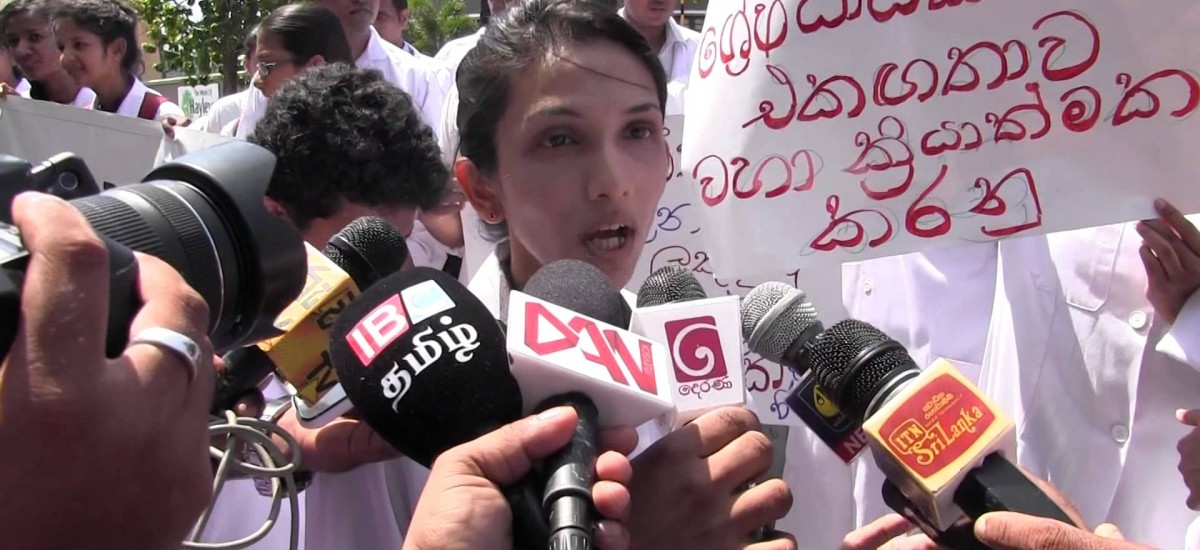Image courtesy YouTube
Medical education in Sri Lanka commenced in 1870 with the establishment of the Ceylon Medical College. It became the Faculty of Medicine in 1942 with the establishment of the University of Ceylon. Sri Lanka produced well-recognized doctors who practice around the world with the quality education they received in our medical colleges. Post graduate studies in medicine for MRCP, FRCS, FFARCS, MRCOG, FRCR, MRCPath, MRCPsych, FDSRCS were not available until recently and had to be undertaken abroad, which were recognized by the Ministry of Health.
The demand for medical education has been growing with the state universities unable to cope with the rising demand. The limited opportunities in state medical colleges locally have compelled thousands of students who aspire to be doctors to seek universities abroad. Less than 20% of the eligible candidates who pass the General Certificate of Education, Advanced level are chosen for University admission to study for different undergraduate programs. The rest have to choose other fields of study or go abroad. Private campuses, some affiliated to foreign universities offer various non-medical degrees in Sri Lanka. The Sri Lanka Medical Council (SLMC) has continued to refuse acceptance of local or foreign institutions offering medical degrees locally, even though the university grants commission has approved medical education institutes. The SLMC has no qualms of accepting foreign Medical degrees of questionable universities from a number of countries in the former Soviet Republic, China and the SAARC region. Some of these universities offer medical degrees even with O’ Level education and a foundation course, like for many other undergraduate courses. The SLMC does not accept this qualification for registration, but these students are able to practice in many countries around the world.
The state universities do not accept students from international schools that follow the London curricula either. It is estimated that over a hundred thousand students are following the London O’ Level and A’ Level syllabi in these schools. These students are deprived of a university education in their home country. Where do they go? The affordable universities are in countries that have standards far below ours. Why is it that those who are willing to pay cannot get quality medical education locally?
To fill this void, a visionary investor, Dr. Neville Fernando set up the South Asian Institute of Technology and Medicine (SAITM) with a thousand-bed teaching hospital. The medical Mafia decided to boycott this institution and The Sri Lanka Medical Council (SLMC) has urged the Health Ministry not to recognize medical degrees awarded by the South Asian Institute of Technology & Medicine (SAITM), highlighting the accusations of a faulty approval process and implying that the private medical faculty has insufficient clinical facilities. These may be valid reasons, but this cannot be used against the students who are now completing their five year course of medical studies.
On an application by the current medical students studying at SAITM, and with the consent of the Ministry of Health, the Supreme Court directed the Health Ministry to provide teaching and clinical facilities for the students of the SAITM campus at the Avissawela Base Hospital and the Kaduwela MOH. Today, medical students of state universities have started a campaign against this decision by staging protests on the streets. Is this not contempt of court? Should they not be arrested?
The University Grants Commission and the Sri Lanka Medical Council ask for minimum grades of 2C and 1S (2 Credit Passes and 1 Simple Pass) in the Advanced Level Examination to register as medical professionals in Sri Lanka, after having completed the Degree in Medicine, ERPM exams and an internship period of 12 months. All these students who graduate from SAITM or any other foreign university will have this minimum requirement.
The undergraduates who are protesting on the streets are blinded by selfish personal agendas or are misled by political groups with vested interests. These students have enjoyed the perks of free education from the primary until they completed their Advanced Level exams. They still continue to receive free education and Mahapola scholarships, receive preferred hospitals for internship, and are guaranteed employment in the case of doctors. Graduates who are unemployed too protest, demanding employment in the state sector and all the perks that go with it, and a pension scheme too. All this while the Public keep paying for all these, while some even send their children to private or international schools paying exorbitant fees. Their effort to enable their children to receive higher education without burdening the State is still seen as a reason for these undergraduates of state universities to protest on the streets, disturb civilian life, break the law, engage in contempt of court, and obstruct the freedom of choice for students who want to pay for their higher education.
Fortunately, while the authorities and Police are on their back foot, the general public are now willing to challenge these university miscreants. The recent reaction by a few motorists probably shocked the organizers of these protests. It’s a matter of time before a desperate motorist or civilians looses their patience.
Yahapalanaya does not mean allowing these wild asses to run amok and create mayhem and turmoil for everyone. Students who do not enter state universities too need justice.

